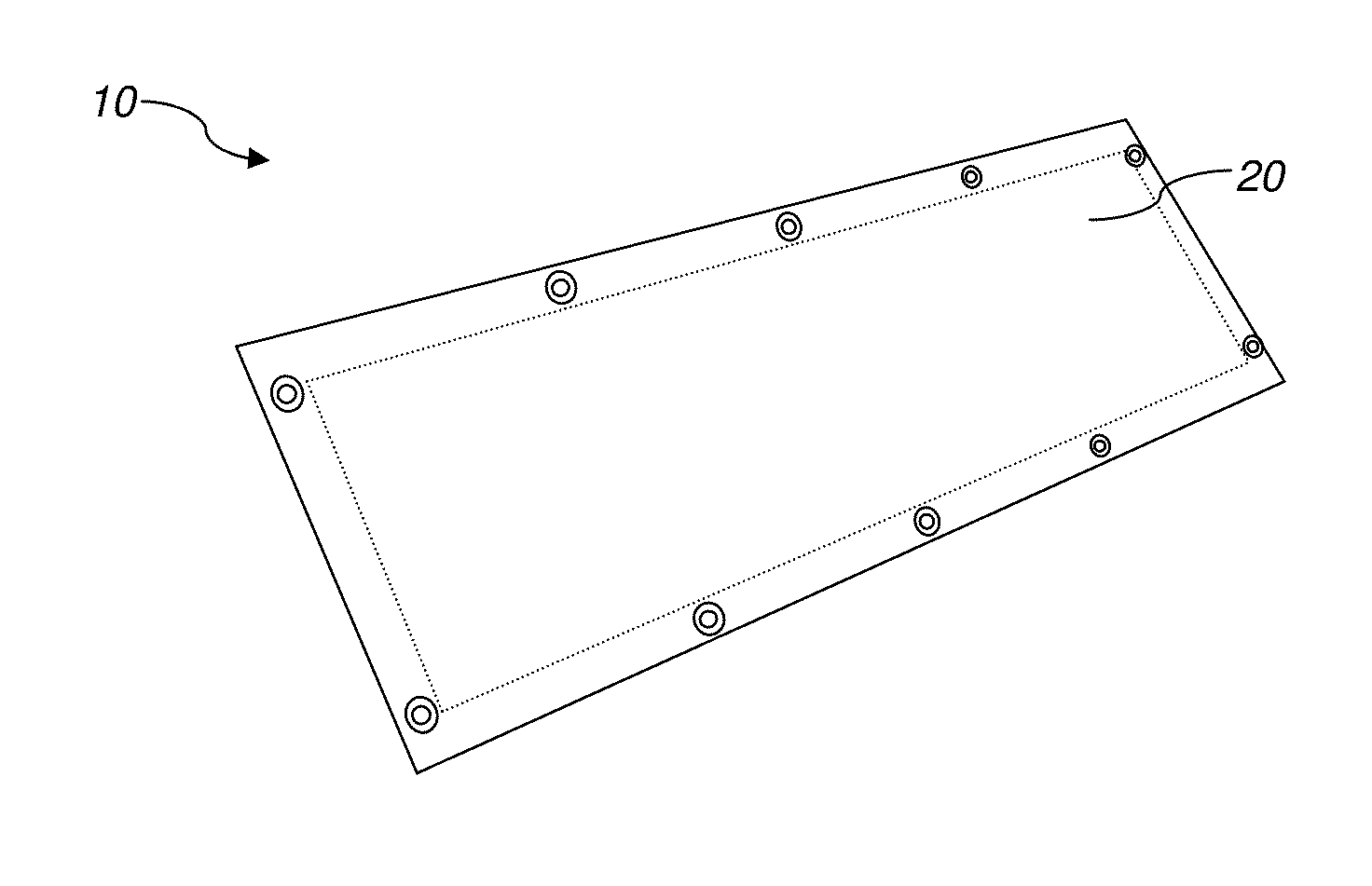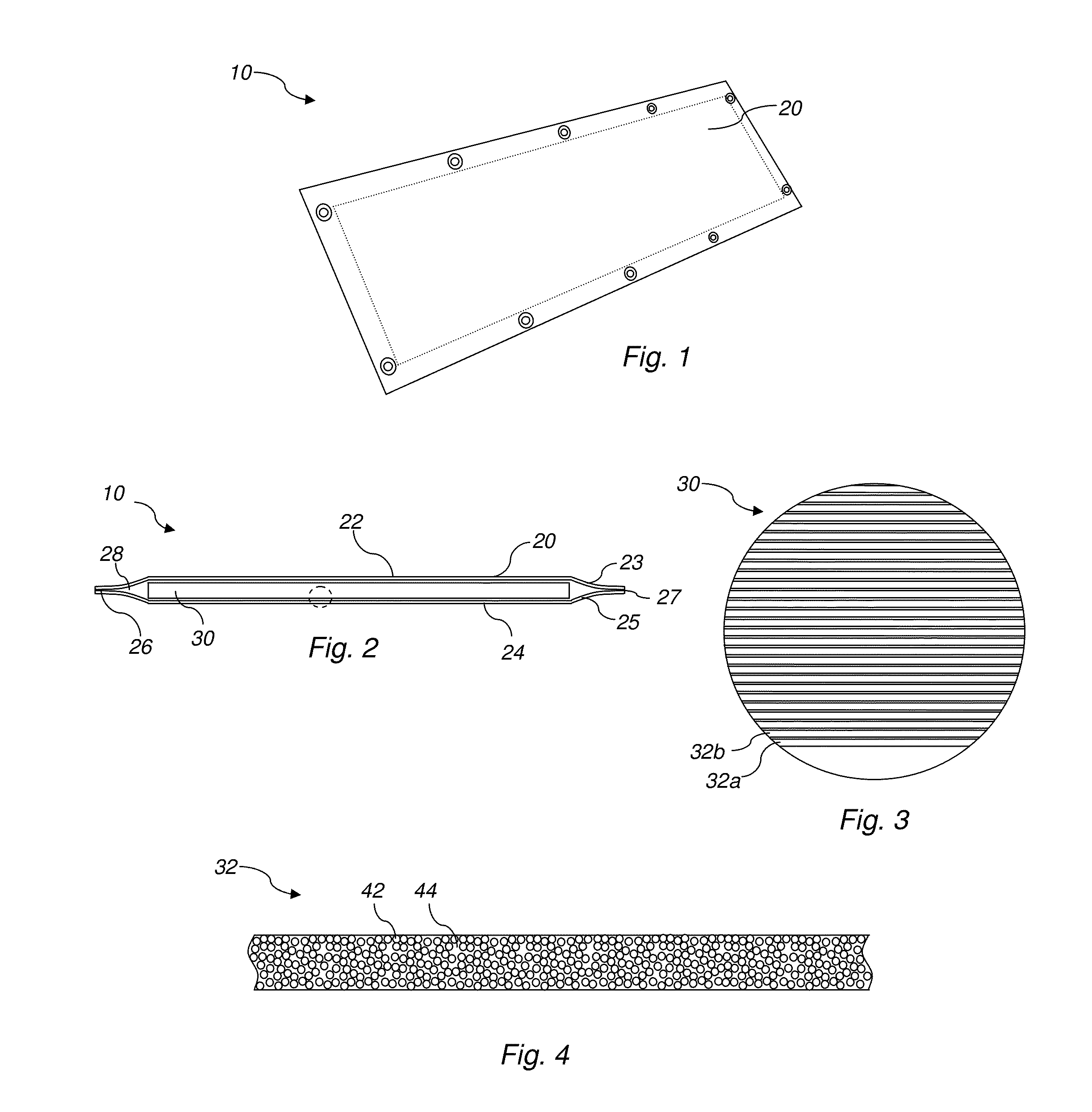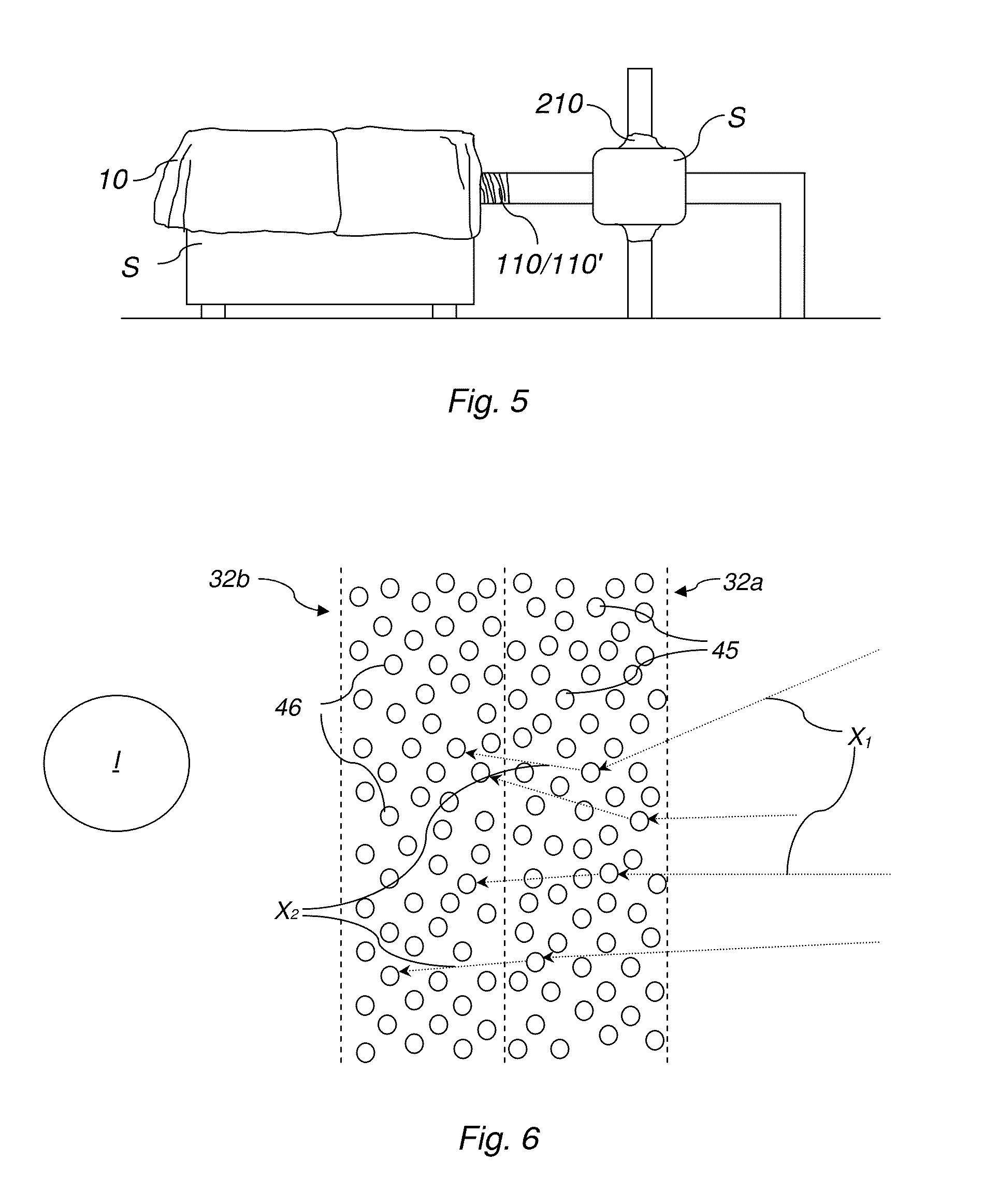Nuclear radiation shields, shielding systems and associated methods
a technology of nuclear radiation shielding and shielding system, applied in the field of radiation shields, can solve the problems of compacted lead wool that is still relatively rigid and somewhat brittle, is subject to cracking and/or breaking, and has limited flexibility, so as to prevent cracking, resist cracking, and impart the flexibility of the radioactivity-limiting element.
- Summary
- Abstract
- Description
- Claims
- Application Information
AI Technical Summary
Benefits of technology
Problems solved by technology
Method used
Image
Examples
example 1
[0050]Barium sulfate radiation blankets having weights per unit area of ten (10) pounds per square foot were prepared by stacking twenty-four (24) 0.6 mm thick sheets of sheets of barium sulfate and vinyl having a percent solids loading of about 80% to about 82%, by weight. Although the sheets were superimposed, they were not completely adhered to one another. The superimposed sheets where introduced into the vinyl shell of a conventional lead wool radiation blanket. These barium sulfate radiation blankets were placed, one at a time, separately over a source of mixed radiation, emitting nuclear radiation varying from a rate of about 10 millirad per hour (mrad / hr.) to about 25 mrad / hr., as measured using a radiation survey meter placed on an opposite side of the barium sulfate radiation blanket, The same procedure was repeated with conventional lead wool radiation blankets with weights per unit area of ten (10) pounds per square foot.
[0051]On average, when the barium sulfate radiatio...
example 2
[0053]In another study, bismuth oxide and barium sulfate (bilayer) radiation blankets were constructed and tested separately against point sources of cobalt-60, and cesium-137 Similar to the barium sulfate radiation blankets, these bilayer blankets were formed by stacking varying thicknesses of bismuth oxide sheets over nine (9) layers of barium sulfate sheets. An ion chamber was used to measure the dose of radioactivity passing through each bi-layer blanket, and was placed on an opposite side of the bilayer radiation blanket from the point source. The same procedure was repeated with conventional lead wool radiation blankets. Data were collected and analyzed for attenuating performance. It was found that the performance of the bilayer blanket (“BloXR”) was exactly in line with lead-wool blankets (“Lead”) for both the cobalt-60 and the cesium-137 point sources, as shown in the graphs of FIGS. 7 and 8, in which the performance of each bilayer blanket, measured as % Attenuation (x-axi...
example 3
[0054]When barium sulfate radiation blankets (see EXAMPLE 1) were evaluated on-site (i.e., at a facility where radioactive materials were present) for attenuation per unit weight, it was found that the performance of the barium sulfate radiation blankets was better than that of lead-wool blankets. The users at the site also noted that the barium sulfate radiation blankets were very pliable and could be easily wrapped around the objects on which radiation blankets are typically used at that site. When tested for attenuating radiation from a filter housing emitting 30 mrad / hr., the % attenuation per unit weight for the tested barium sulfate blanket was 7.0%, whereas the % attenuation for a lead-wool blanket (which was used as a control) was only 6.7%. The radiation level measured 10.5 mrad / hr. downstream of the barium sulfate blankets (i.e., on an opposite side of the blanket from the filter housing), indicating the barium sulfate blanket actually attenuated 65% of the radioactivity e...
PUM
 Login to View More
Login to View More Abstract
Description
Claims
Application Information
 Login to View More
Login to View More - R&D
- Intellectual Property
- Life Sciences
- Materials
- Tech Scout
- Unparalleled Data Quality
- Higher Quality Content
- 60% Fewer Hallucinations
Browse by: Latest US Patents, China's latest patents, Technical Efficacy Thesaurus, Application Domain, Technology Topic, Popular Technical Reports.
© 2025 PatSnap. All rights reserved.Legal|Privacy policy|Modern Slavery Act Transparency Statement|Sitemap|About US| Contact US: help@patsnap.com



